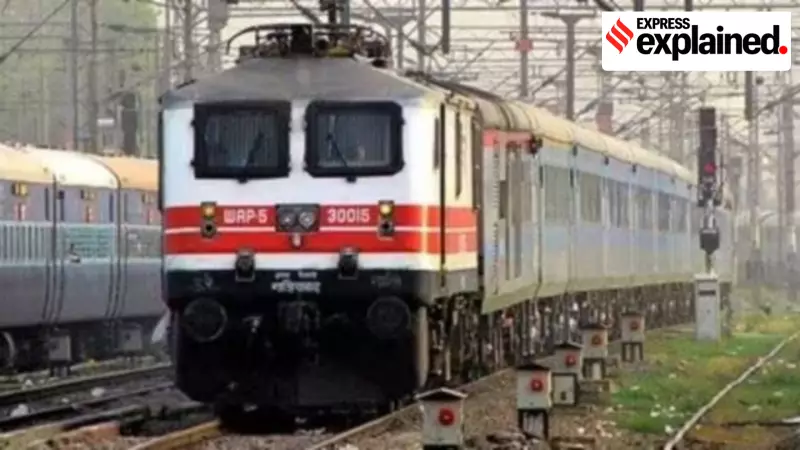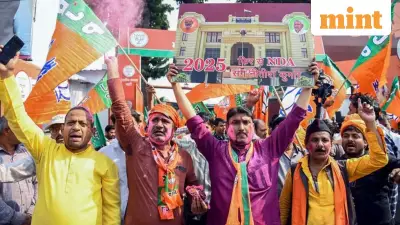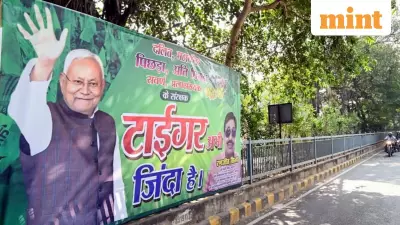
Historic Railway Project Announced for Punjab
This week marked a significant milestone for Punjab's transportation infrastructure as Minister of State for Railways Ravneet Singh Bittu announced the crucial Ferozepur-Patti Rail Link. The 26-kilometer railway line, sanctioned at a cost of Rs 764 crore, will connect Mallanwala Khas station on the Jalandhar-Ferozepur section with Gharyala station on the Patti-Khemkaran section.
While the project might not be massive in scale, its historical and strategic significance cannot be overstated. The new link will reconnect areas whose original railway routes were lost during the traumatic Partition of 1947, most notably the vital Ferozepur-Khemkaran section that once ran through what is now Pakistan.
Healing the Scars of Partition
The Ferozepur-Patti rail link represents more than just infrastructure development—it's an attempt to heal historical wounds that have remained fresh for over seven decades. Before Partition, the route between Ferozepur and Khemkaran was a direct line running through Kasur in present-day Pakistan, passing through the Hussainiwala border check post.
After the subcontinent was divided, this crucial transportation artery was severed, leaving the track between Khemkaran and Kasur completely defunct. The new 26-kilometer link will effectively restore this connection, reducing the travel distance between these points from the current 294 kilometers to just 110 kilometers—a massive reduction of 184 kilometers.
The proposed railway line will traverse Tarn Taran and Ferozepur districts, passing through 11 villages and one semi-urban area: Kot Budha, Maneke Jand, Maan, Talwandi Mastada Singh, Safa Singh Wala, Kaleke Uttarh, Talwandi Soba Singh, Bangla Rai, Mallanwala Khas (Semi Urban), Dulla Singh Wala, Kutub Din Wala and Kale ke Hittar.
Land Acquisition Challenges and Local Concerns
These border villages have historically borne the brunt of multiple tragedies—Partition, subsequent wars, militancy, and narco-terrorism. This complicated history makes land acquisition particularly challenging for both the Railways and the Punjab government.
A Social Impact Assessment study conducted in 2020 by Amritsar's Guru Nanak Dev University revealed that Partition wounds remain raw in these communities. The report noted that families who suffered immensely during Partition and subsequently settled in areas close to river beds, making the land fertile through generations of labor, now fear being uprooted from their land holdings after 70 years.
The study emphasized the centrality of land to these communities, stating that "agriculturists in this region have toiled over generations to convert river and frontier land into fertile land... The land which was not worth a single crop has been made tillable by the hard work of generations of these committed people."
During public hearings in March 2020, locals demanded compensation of Rs 1 crore per acre, reflecting both the emotional and economic value they place on land that their families have transformed through decades of hard work.
Strategic and Economic Benefits
The Ferozepur-Patti rail link offers multiple strategic advantages given its location near India's international border with Pakistan. With Army cantonments in both Amritsar and Ferozepur city, the new connection will enable faster movement of military personnel, equipment, and ammunition—a crucial factor for national security.
The project will also create significant transportation efficiencies by establishing a new Ferozepur-Fazilka-Mumbai route as an alternative to the existing Ferozepur-Delhi-Mumbai line. This will cut the Jammu-Ferozepur-Fazilka-Mumbai corridor by an impressive 236 kilometers.
Currently, the only Jammu-Amritsar-Ferozepur route operates via Jalandhar. The new link will connect Jammu-Amritsar-Ferozepur directly, bypassing Jalandhar entirely. This is particularly significant for Amritsar, which serves as both a major business hub and a key Sikh pilgrimage center—home to Harmandir Sahib, the most sacred shrine, and Akal Takht, the highest temporal seat.
According to Minister Bittu, the project will benefit nearly 10 lakh people and generate approximately 2.5 lakh jobs. The railway line is expected to serve 2,500-3,500 passengers daily, particularly benefiting students, employees, and patients from nearby villages who require regular transportation access.
Though the Ferozepur-Patti rail link has been officially sanctioned only recently, it has been in the planning stages for over five years, reflecting the complexity of bridging both geographical and historical divides in this sensitive border region.





